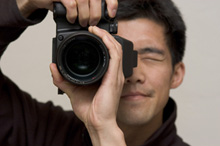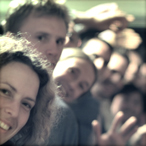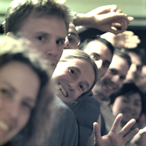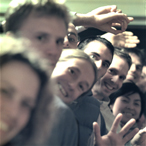
Ren Ng, Stanford University
Marc Levoy, Stanford University
Mathieu Brédif, Stanford University
Gene Duval, Duval Design
Mark Horowitz, Stanford University
Pat Hanrahan, Stanford University
Stanford University Computer Science Tech Report CSTR 2005-02
April, 2005

Our prototype in use.





Photographs digitally refocused at different depths, computed after a single exposure of our light field camera. The fourth image shows what a conventional camera would have produced.
Abstract
This paper presents a camera that samples the 4D light field on its sensor in a single photographic exposure. This is achieved
by inserting a microlens array between the sensor and main lens, creating a plenoptic camera. Each microlens measures not just
the total amount of light deposited at that location, but how much light arrives along each ray. By re-sorting the measured
rays of light to where they would have terminated in slightly different, synthetic cameras, we can compute sharp photographs
focused at different depths. We show that a linear increase in the resolution of images under each microlens results in a linear
increase in the sharpness of the refocused photographs. This property allows us to extend the depth of field of the camera
without reducing the aperture, enabling shorter exposures and lower image noise. Especially in the macrophotography regime, we
demonstrate that we can also compute synthetic photographs from a range of different viewpoints. These capabilities argue for a
different strategy in designing photographic imaging systems.
To the photographer, the plenoptic camera operates exactly like an ordinary hand-held camera. We have used our prototype to take
hundreds of light field photographs, and we present examples of portraits, high-speed action and macro close-ups.
Tech Report 150 dpi (1 MB)
Video AVI (74.4 MB) Uses XVid codec.